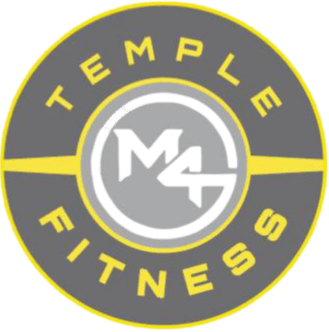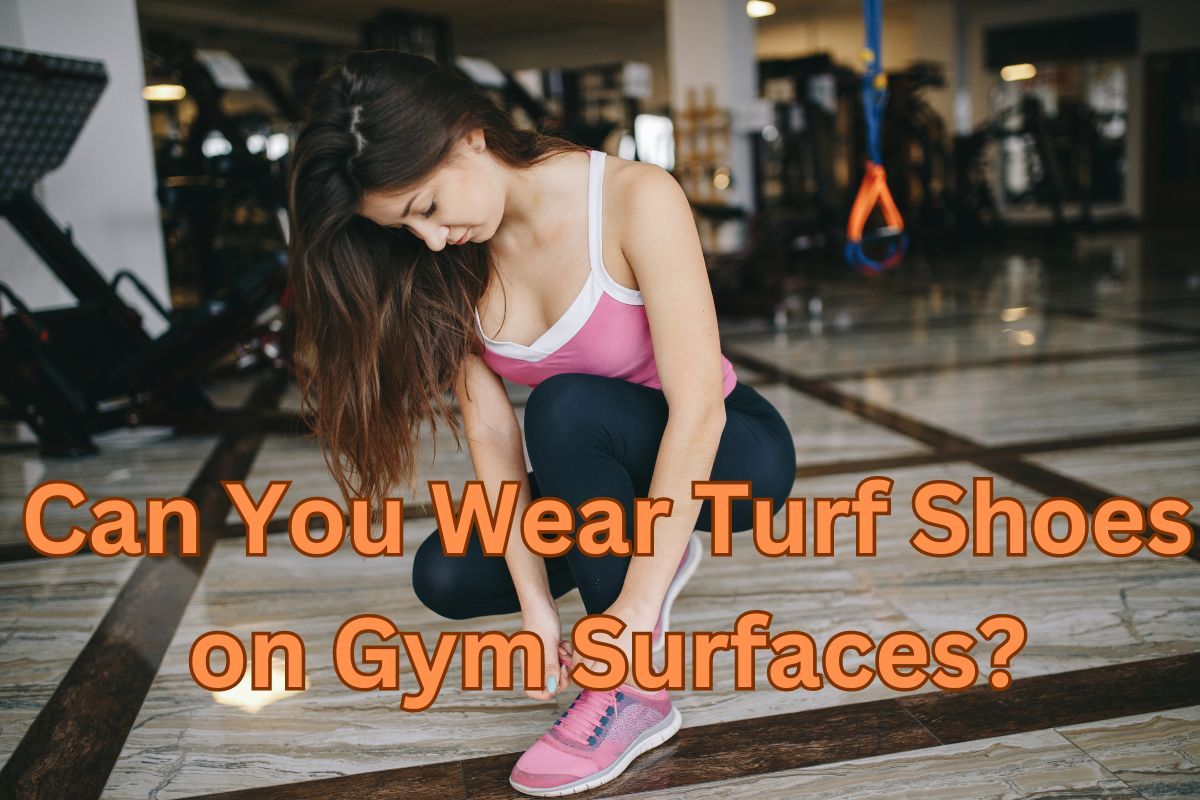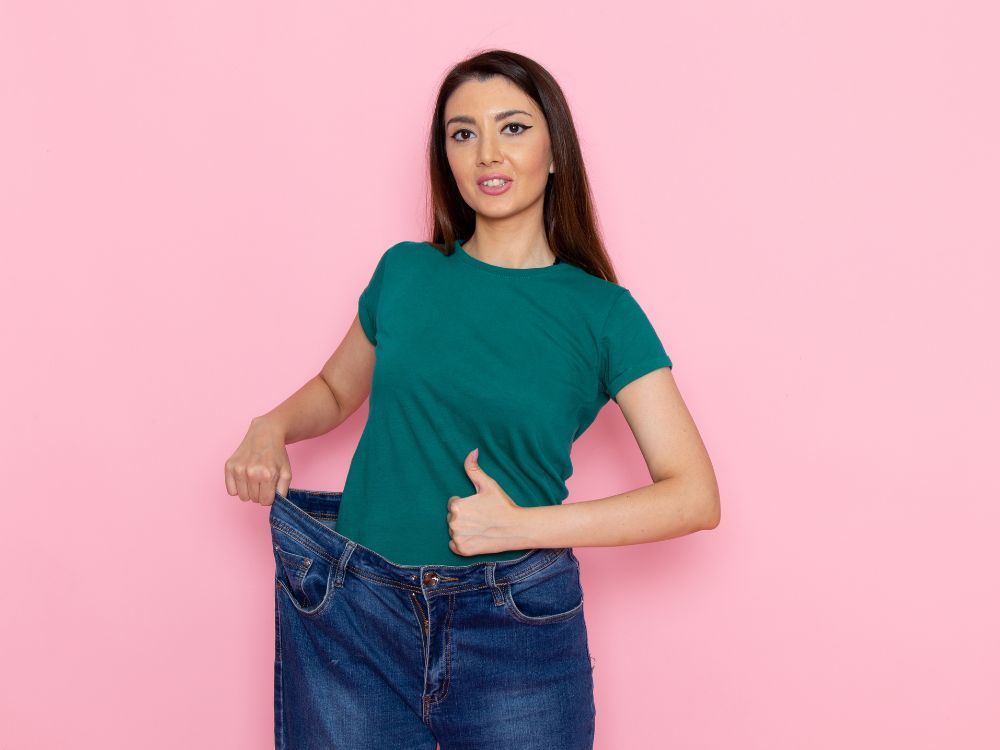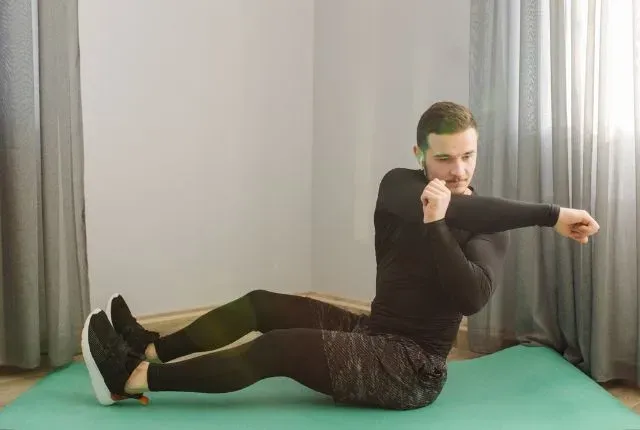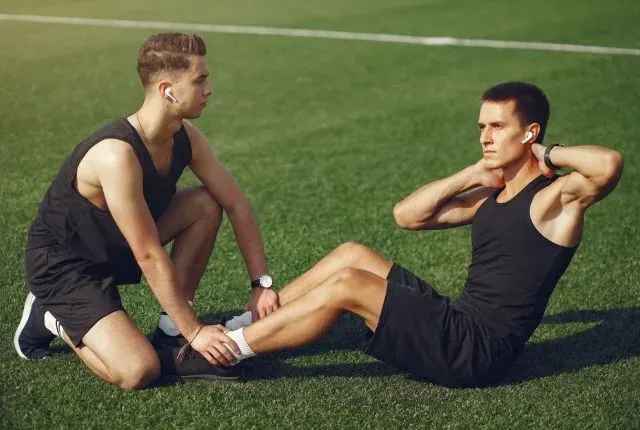Maximizing Performance: Can You Wear Turf Shoes on Gym Surfaces?
You decided to start strength training and visited your nearest gym. Unfortunately, the authorities disallow you to begin the workout.
The reason?
You were wearing a pair of turf shoes.
So, a question arises “can you wear turf shoes on gym? Does the pair of shoes really matter?
You can’t wear turf shoes during workouts in the gym. Turf shoes are for athletes and used on artificial grass or turf fields. Wearing them may injure you and damage the gym floor. So, you should do workouts wearing shoes designed specifically for the gym.
We answered the question in more detail in this comprehensive guide. Continue reading.
What are Turf Shoes?
Before heading to the main topic, let’s learn what turf shoes are.
Turf shoes are made of rugged rubber and durable outsole suitable for daily training. The outsole of these shoes features small studs or close-knit rubber. Such a design in the outsole gives the pairs excellent traction and grip in the turf field. That is why the pairs are called turf shoes.
Generally, athletes use turf shoes during their practice. The close-knit rubber works to improve a player’s performance on turf fields by providing required grip.
Overall, the level of grip is exceptional with turf shoes compared to regular sports shoes.
Can You Wear Turf Shoes on Gym?
In simpler words, you should not wear turf shoes on the gym floor.
As said, turf shoes are designed for training purposes on fields made of artificial grass or turfs. So, if you wear them to the gym, you will not get the most out of the shoes. More importantly, you can injure yourself while training in the gym.
You can even damage the gym floor.
Additionally, if you go to a well-reputed health coaching gym in Franklin, TN wearing turf shoes, their management may disallow you to wear the pairs and train there. The reason is, many popular gyms prohibit turf shoes to be worn on the hard floor.
Simply put, you mustn’t wear turf shoes in the gym. The prime reason is their small spikes or studs. You may get hurt, damage the floor. So, it is better safe than sorry!
Buy a pair of gym shoes and wear them in the gym. You will get required comfort as these shoes are made for wearing in the gym and hard floors.
Why are turf shoes not a good choice for Gyms?
Now you know turf shoes shouldn’t be worn in the gym. Here, we discussed the reason briefly. Read intently.
Small Cleats & Poor Traction
The turf shoes have small cleats and rubber studs on the outsole. Such a design provides excellent grip on the soft ground.
As mentioned, gum floors are hard, and you will not get any benefit from wearing turf shoes in the gym. Meaning that, turf shoes are not worth wearing on gym or hard surfaces.
Wear Down Faster
Since the cleats or spikes are designed to penetrate the turf floor deeply, the outsole fails to fulfill its purpose on hard floors in the gym. As a result, the cleats of turf shoes wear down faster compared to gym shoes.
You can Injure Yourself
If you wear turf shoes to the gym, you can injure yourself.
How?
Though the outsole is flexible and rugged, the insole cushioning is thin as the soil or grass of turf is soft. Thus, your heels will not get the necessary support when you train on a gym floor.
Moreover, lack of cushioning lets you feel pain in the joints when you exercise, increasing the chance of injury.
A few users wear turf shoes in the gym, and they experience pain in the joints after a couple of days. Then, they identified the culprit as the turf shoes and stopped wearing the pairs when training on hardwood floors.
Turf Shoes vs Gym Shoes – What are the Differences?
If you are new in the shoe business, you might be a bit confused with all these explanations.
Wave off your hands to the confusion!
I shared a comparison chart below about turf vs gym shoes. Hopefully, all your confusions will be cleared.
| Parameter | Turf Shoes | Gym Shoes |
|---|---|---|
| Designed for | Outdoor pitches like turf or artificial grass fields. | Indoor purposes, floors made of vinyl, concrete, ceramic, etc. |
| Outsole | Small and rugged cleats. | Large and rugged spikes. |
| Materials | Rugged upper material | Softer upper material |
| Weight | Lightweight | Lightweight |
| Grip | Excellent grip on turfs, artificial grass fields. | Provides required stability and traction on hardwood floors. |
| Midsole | Thin cushioning. Thus, they lack durability. | Thick and soft cushioning, providing required flexibility. |
With the above comparison, it is evident that wearing turf shoes in the gym doesn’t provide benefits. In fact, they are not designed for the gym, and you must follow the sole purpose of these shoes.
FAQ on can you wear turf shoes on gym?
Are artificial turf shoes suitable for the gym floor?
The straightforward answer is a BIG NO.
A user wore artificial turf shoes in the gym during the workouts and sometimes he experienced poor traction. The small cleats are the prime reason for the slippage which doesn’t provide required grip on the gym floors.
Will wearing turf shoes at the gym damage them?
Yes, wearing turf shoes in the gym can damage them.
The rugged and small studs perform well on soft artificial grass or turf fields. Competition Prep Coaching Gym floors are hard. As a result, when you work out on the gym floor, the cleats can’t penetrate perfectly, causing faster wear and tear.
Summing Up
The answer to the question “can you wear turf shoes on gym?” is answered through the above discussion. We also shared user experience to clarify our claims.
You must consider the above points and make a careful consideration before wearing turf shoes for your workout purposes in the gym Franklin, Tennessee, USA. Check the integrity and performance of these shoes in the gym and decide whether to wear them during your training sessions at the gym. Understand the limitations and challenges of turf shoes and make an informed decision.
